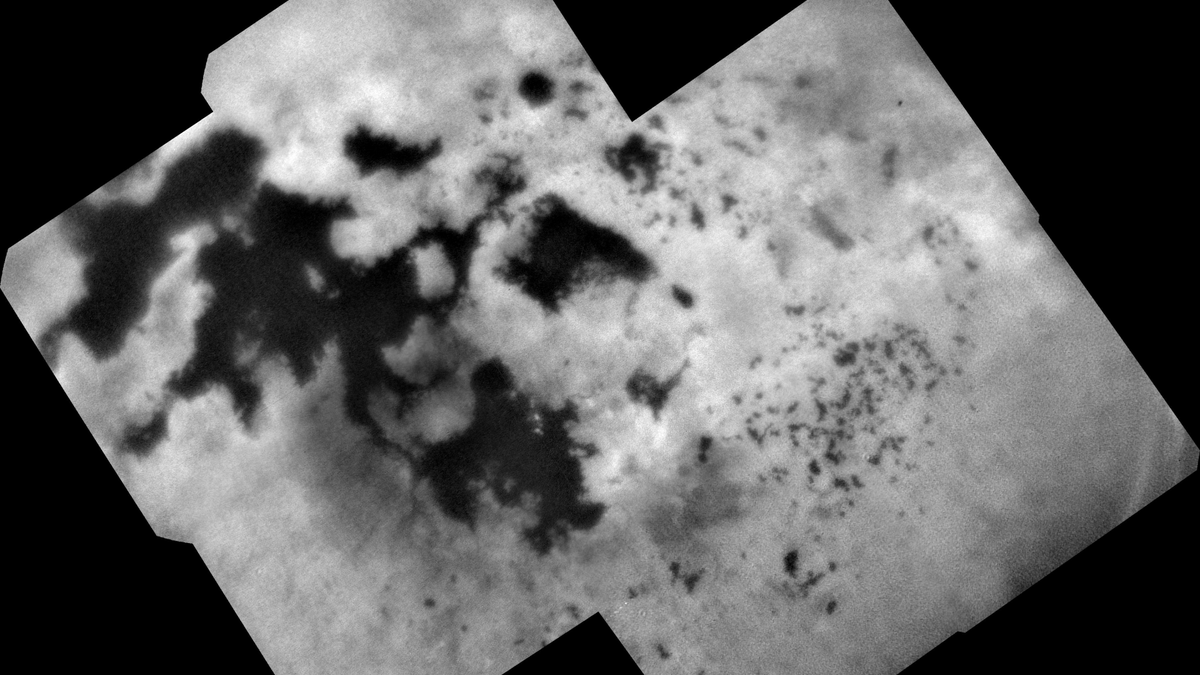
The Cassini mission's last image of Saturn's moon Titan was taken just four days before the spacecraft plummeted into the gas giant in September 2017. (NASA/JPL-Caltech/SSI)
Just four days before the Cassini spacecraft's dramatic dive into Saturn's atmosphere last year, cameras aboard the spacecraft captured the mission's last image of Saturn's largest moon, Titan.
That image shows off what makes that moon so weird: It's covered in lakes brimming with methane and ethane. "Titan is a fascinating place that really teases us with some of its mysteries," Elizabeth Turtle, a planetary scientist at the Johns Hopkins University Applied Physics Laboratory, said in a NASA statement released with the image. [See Cassini's Amazing Titan Photos from Saturn]
Titan has successfully clung to its mysteries even in the wake of the Cassini mission. That's particularly impressive, since the Cassini spacecraft carried a European Space Agency probe called Huygens, which landed on the odd moon.
One of those mysteries is on display in this image, which shows only a couple small clouds (the pale areas near the center of the image), despite having been snapped during a time when scientists had expected to see substantial cloudiness on the moon.
More From Space.com
"In fact, atmospheric models predicted summer clouds over the northern latitudes several years ago," Turtle said in the NASA statement. "So, the fact that they still hadn't appeared before the end of the mission is telling us something interesting about Titan's methane cycle and weather." [Landing on Titan: Photos from Europe's Huygens Probe]
But puzzle aside, the lack of clouds makes it easier to admire the lakes that dot Titan's surface, which appear here as dark areas. The large network of dark splotches to the left of this image is a lake known as Kraken Mare, with Punga Mare above and Ligeia Mare below the center of the image.
When Cassini captured this image, it was about 87,000 miles (140,000 kilometers) above the moon's surface. Although Cassini's days around the moon are over, scientists hope to be able to someday revisit Titan with a dedicated mission — NASA is considering one such mission called Dragonfly, which would be able to hop around the moon's surface.
Cassini's mission ended on Sept. 15, 2017, when the spacecraft plunged into Saturn in an intentional death dive. NASA won an Emmy award this month for the space agency's coverage of the end of Cassini's mission at Saturn.
Original article on Space.com.